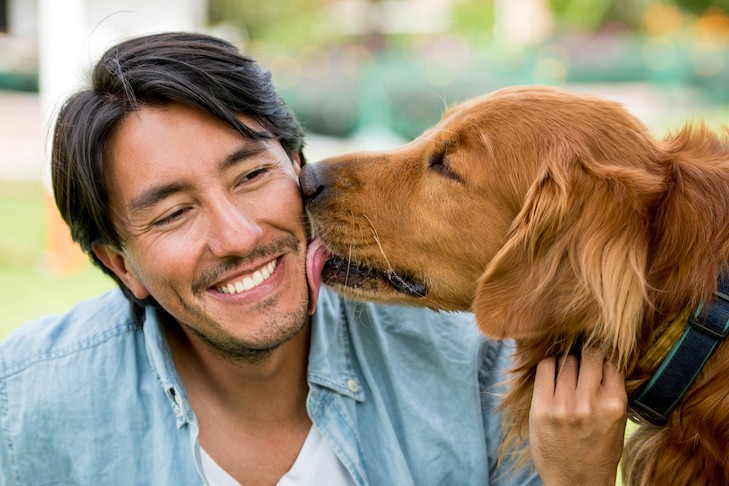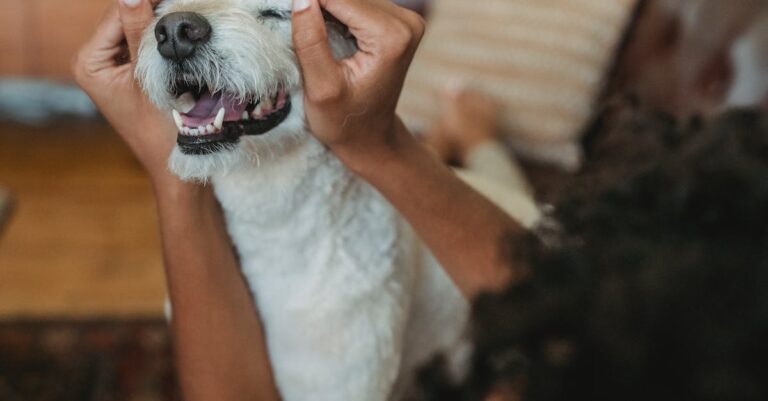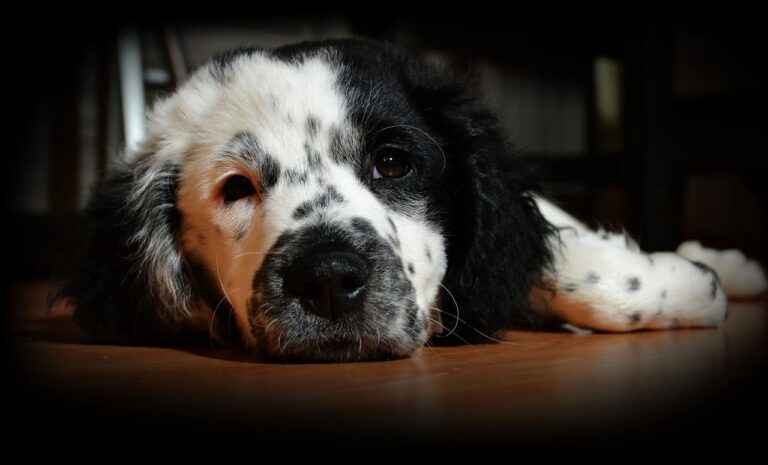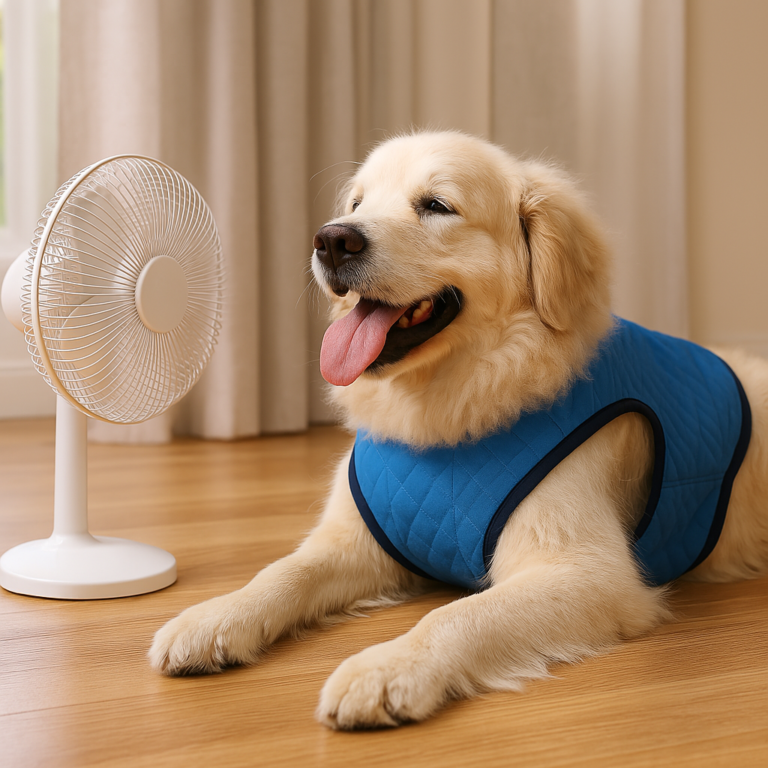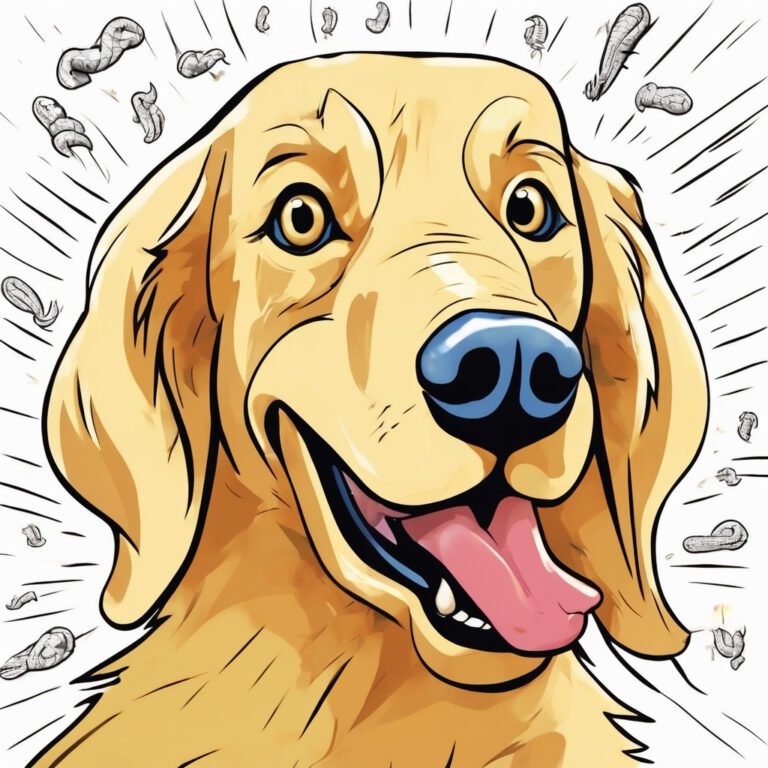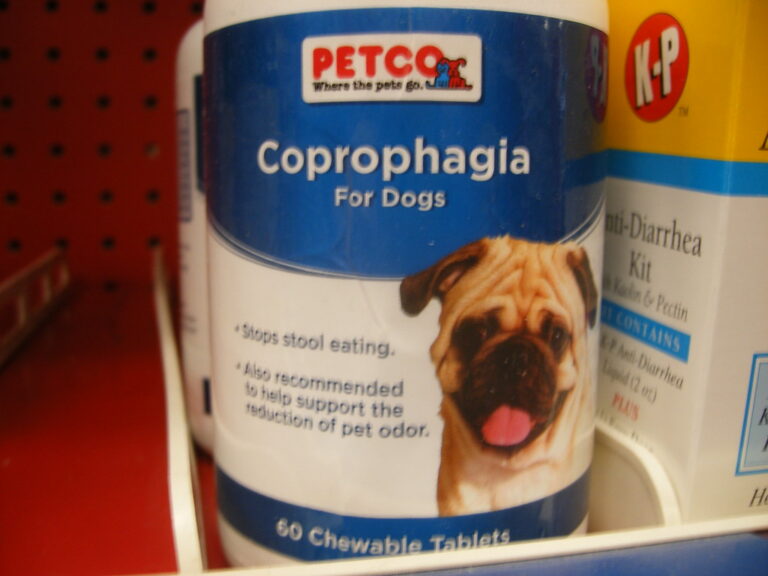Discovering that your beloved furry friend has developed a rather unusual habit can be quite unsettling. Coprophagia, the act of consuming feces, is a behavior observed in both dogs and cats that often leaves pet owners puzzled and concerned. In this comprehensive guide, we will delve into the intriguing world of coprophagia and explore effective strategies to handle this peculiar behavior.
Throughout this article, you can expect to gain valuable insights into why dogs and cats engage in coprophagia, as well as the impact of diet on their feces-eating tendencies. We will also dive into the role of nutrition in preventing this behavior and provide practical tips for selecting the most suitable dog and cat food options. Additionally, we will explore behavioral approaches aimed at discouraging coprophagia in your furry companions.
Embark on this enlightening journey with us as we navigate through the mysteries surrounding coprophagia, equipping you with knowledge that will both reassure and empower you to tackle this curious habit head-on. By the end of this article, you’ll have an arsenal of strategies at your disposal to effectively handle coprophagia in your dogs and cats, restoring harmony within your household.
The Curious Case of Coprophagia
Coprophagia, the ingestion of feces, is a perplexing behavior observed in both dogs and cats. This intriguing habit has left pet owners and experts scratching their heads in disbelief. Why would our beloved furry companions engage in such a seemingly repulsive act? Despite its unappealing nature, coprophagia is not uncommon among our four-legged friends. Understanding the underlying reasons behind this behavior can help us navigate this curious case with compassion and effective solutions.
Animals have been exhibiting coprophagic tendencies since time immemorial, dating back to their wild ancestors. While it may seem baffling to us humans, to our pets, it may serve a purpose deeply rooted in their primal instincts. For instance, dogs scavenging for food in the wild would consume feces to extract any undigested nutrients left behind by prey animals. Similarly, feline ancestors might have engaged in coprophagy as a means of keeping their territory clean and free from potential predators’ scent.
Coprophagia can also be influenced by social dynamics within a multi-pet household. Some dogs or cats may indulge in consuming feces due to attention-seeking behavior or as an attempt to mimic their fellow furry companions’ actions. It is crucial not to judge or shame our pets for engaging in coprophagia but instead approach the situation with patience and understanding.
A Peculiar Behavior: Coprophagia in Dogs
Coprophagia, the act of consuming feces, is a peculiar behavior that some dogs engage in. While it may sound repulsive to us humans, it is important to approach this topic with an open mind and understanding. Dogs have been known to exhibit coprophagic tendencies for various reasons, ranging from nutritional deficiencies to behavioral issues. By delving into the intricacies of this behavior, we can gain insight into how to address it effectively.
One possible explanation for coprophagia in dogs is related to their ancestral roots as scavengers. In the wild, canines often rely on scavenging for food sources, and consuming feces may have been a survival mechanism to extract additional nutrients from their environment. While modern-day dogs are domesticated and well-fed pets, some individuals may still display this instinctual behavior due to their genetic predisposition.
Furthermore, coprophagia among dogs can also be associated with dietary factors. A dog’s diet plays a crucial role in their overall health and well-being. If a dog’s diet lacks essential nutrients or if they are not receiving a balanced meal, they might feel compelled to seek these missing elements elsewhere – including from their own feces or that of other animals’. It is vital for pet owners to provide a nutritionally complete diet that meets all the dietary requirements of their furry companions.
Tales from the Backyard: Coprophagia and Diet
When it comes to coprophagia, the connection between diet and this peculiar behavior cannot be ignored. Tales from the backyard reveal that dogs and cats engaging in coprophagia often have dietary imbalances or deficiencies. To truly understand this phenomenon, we must dive into the world of pet nutrition.
Dogs exploring their own feces or those of other animals in the backyard may do so out of an instinctual need to obtain missing nutrients. In some cases, a poor-quality diet lacking in essential vitamins, minerals, or proteins can lead to coprophagia. Similarly, cats may indulge in this habit due to nutritional deficiencies or digestive issues.
However, it’s important to recognize that not all instances of coprophagia are solely linked to diet. Some pets may exhibit this behavior due to environmental factors such as stress, boredom, or even attention-seeking tendencies. Nevertheless, ensuring a well-balanced diet is an essential step towards preventing coprophagia and promoting overall pet health.
Feline Coprophagia: A Quirky Habit in Cats
As we delve deeper into the mysterious world of coprophagia, we must not overlook our feline friends who occasionally partake in this peculiar habit. While it may be less common in cats compared to dogs, feline coprophagia still poses questions that demand our attention and understanding. Let us embark on a journey to unravel the enigmatic nature of this behavior in our beloved feline companions.
It is no secret that cats are fascinating creatures, often characterized by their independent and enigmatic nature. Feline coprophagia adds yet another intriguing layer to their behavior repertoire. Despite being fastidious groomers, some cats may display an inclination towards consuming feces from either their own litter box or that of other animals. This perplexing habit raises eyebrows among cat owners, leaving them pondering over the reasons behind such behavior.
The possible motivations behind feline coprophagia are multifaceted and subject to debate among experts. One theory suggests that cats engage in this behavior as a means of maintaining a clean living space by eliminating traces of fecal matter. Another perspective suggests that it could stem from nutritional deficiencies or imbalances within the cat’s diet, leading them to seek out additional nutrients present in feces. While the precise cause remains elusive, understanding these potential explanations allows us to approach coping strategies for this peculiar habit with greater empathy and insight.
Unveiling the Mystery: Why Do Dogs and Cats Engage in Coprophagia?
It is a question that has puzzled pet owners for ages – why on earth would our beloved dogs and cats engage in such a peculiar behavior as coprophagia? While it may be unsettling to witness your furry friend snacking on their own or other animals’ waste, rest assured that there are several reasons behind this perplexing habit.
One of the primary reasons dogs and cats engage in coprophagia is rooted in their ancestral instincts. In the wild, canines and felines would consume feces as a survival mechanism to eliminate any potential trace of their presence from predators. This innate behavior has been passed down through generations, even though our domesticated companions no longer face similar threats.
Another cause for coprophagia lies in nutritional deficiencies. Dogs and cats are known to possess an incredible sense of smell, enabling them to detect subtle odors emanating from feces. In some cases, these feces may contain remnants of undigested food or essential nutrients that your pet’s body craves. Consequently, they resort to consuming waste as a means to supplement their diet with missing elements.
The Role of Nutrition: Feeding a Balanced Diet to Prevent Coprophagia
When it comes to addressing the peculiar behavior of coprophagia in dogs and cats, one cannot underestimate the pivotal role that nutrition plays in preventing this unappetizing habit. Providing your furry companions with a balanced and nutritious diet is not only essential for their overall health, but it can also help curb their desire to engage in coprophagia.
A well-rounded and wholesome diet is the foundation for discouraging coprophagia. Ensure that your pet’s meals contain sufficient amounts of high-quality protein, complex carbohydrates, essential fats, vitamins, and minerals. Protein is especially vital as it supports muscle development and provides satiety, reducing the likelihood of seeking out fecal matter as an alternative source of nutrients.
In addition to macronutrients, consider incorporating prebiotics and probiotics into your pet’s diet. These beneficial bacteria help maintain a healthy gut flora by improving digestion and nutrient absorption. A balanced gut environment not only promotes optimal gastrointestinal function but also reduces the likelihood of coprophagia by ensuring that your pet receives adequate nourishment from their food.
Finding the Right Fuel: Tips for Selecting the Best Dog and Cat Food
When it comes to preventing coprophagia in dogs and cats, nutrition plays a crucial role. Providing your furry companions with a balanced and appropriate diet can significantly reduce their tendency to engage in this peculiar behavior. To ensure you are selecting the best dog and cat food, consider the following tips:
Determine Your Pet’s Specific Needs
Each dog or cat has unique dietary requirements, influenced by factors such as age, breed, size, health condition, and activity level. Consult with your veterinarian to determine the ideal nutritional profile for your pet. A specialized diet tailored to meet their specific needs will not only keep them healthy but also assist in curbing coprophagia.
Consider High-Quality Ingredients
Opt for dog and cat food brands that prioritize high-quality ingredients. Look for options that list meat as the primary ingredient rather than fillers or by-products. Avoid products containing artificial preservatives, colors, or flavors. Choosing nutrient-dense food will provide your pets with essential vitamins and minerals they need to thrive.
Mindful of Allergies and Sensitivities
If your pet has known allergies or sensitivities, select food that avoids common allergens such as wheat, soy, corn, or certain proteins like beef or chicken. Opting for grain-free or limited ingredient diets can be beneficial in managing their digestive health while reducing the likelihood of coprophagia.
Remember that a well-balanced diet is an investment in your pet’s overall well-being. By considering their individual needs and choosing high-quality ingredients while being mindful of any allergies or sensitivities they may have, you can provide them with optimal nutrition that discourages coprophagia while promoting good health and happiness.
Equipping Your Pet’s Diet: The Power of Digestive Supplements
When it comes to tackling coprophagia in dogs and cats, one powerful tool to consider is the incorporation of digestive supplements into their diet. These supplements, specially formulated to support optimal digestion and nutrient absorption, can help address underlying issues that may contribute to this peculiar behavior. By enhancing the overall health of your furry friend’s gastrointestinal system, digestive supplements hold the potential to discourage coprophagia and promote a happy, well-balanced pet.
One key type of digestive supplement that can prove beneficial is probiotics. These “good bacteria” aids in maintaining a healthy gut flora, which plays a crucial role in digestion and nutrient absorption. Probiotics help restore the natural balance of beneficial bacteria in the gastrointestinal tract, thereby aiding in reducing any digestive disruptions that may lead pets to engage in coprophagia. By introducing probiotics into your pet’s diet, you provide them with an extra line of defense against imbalances that could contribute to their desire for fecal consumption.
In addition to probiotics, digestive enzyme supplements are another valuable option. These enzymes assist in breaking down food particles into smaller components for easier digestion and nutrient absorption. By supporting efficient digestion, these supplements help ensure that your pet receives all the necessary nutrients from their meals. When pets have deficiencies or difficulties absorbing certain nutrients from their food due to underlying digestive issues, they may seek them out by consuming feces. Including digestive enzyme supplements as part of their daily routine can aid in addressing these deficiencies and discourage coprophagia behavior.
Behavioral Approaches: Discouraging Coprophagia in Dogs and Cats
Dealing with coprophagia, the perplexing habit of dogs and cats consuming their own feces, can be both frustrating and concerning for pet owners. Fortunately, there are various behavioral approaches that can help discourage this behavior and restore harmony to your furry friend’s life.
Environmental Enrichment: Creating a Distraction-Free Space
A well-stimulated environment plays a crucial role in deterring coprophagia. Ensure your pet has access to plenty of toys, mental puzzles, and physical exercise to keep them engaged. Regular playtime sessions can redirect their attention from the temptation of feces. Designate specific areas for elimination and keep them clean to minimize the opportunity for consumption.
Additionally, consider providing your pet with safe chew toys or bones that satisfy their natural instinct to chew. This not only keeps them occupied but also discourages them from seeking out feces as an alternative chewing option. By creating a distraction-free space enriched with engaging activities, you provide an attractive alternative to coprophagic tendencies.
Remedies and Tools: Incorporating Training and Behavioral Techniques
Incorporating training techniques is essential in dissuading coprophagia. Basic obedience commands such as “leave it” or “drop it” should be taught consistently so that you can redirect your pet’s attention away from feces. Reinforce positive behavior by rewarding them with praise or treats when they adhere to your commands successfully.
Furthermore, certain products are available in the market that aid in discouraging coprophagia by making feces taste unpleasant for pets. These deterrents, which come in the form of sprays or additives sprinkled on food, contain natural substances that can deter your pet from consuming feces. Consult with your veterinarian to explore these options and determine the most suitable one for your furry companion.
Instilling a Sense of Optimism: Patience and Consistency
Recognize that addressing coprophagia requires patience and consistency in training. Understand that breaking this habit may take time, and setbacks are possible along the way. Stay positive and refrain from punitive measures, as they can confuse or distress your pet.
Remember to celebrate small victories during the training process. Each time your dog or cat refrains from consuming feces, reward them with praise or a treat, reinforcing their good behavior. By focusing on positive reinforcement and maintaining a consistent approach, you can instill an optimistic outlook while helping your pet overcome this peculiar habit.
Environmental Enrichment: Creating a Distraction-Free Space
Creating an environment that promotes mental and physical stimulation is crucial in addressing coprophagia in dogs and cats. By providing a distraction-free space, you can help deter your furry friends from engaging in this undesirable behavior. Consider incorporating the following strategies to enhance your pet’s environment:
1. Interactive Toys and Puzzles
Engaging your pets with interactive toys and puzzles can redirect their attention away from coprophagia. These toys are designed to challenge their cognitive abilities while keeping them entertained for hours. Puzzle feeders, treat-dispensing balls, or toys that require problem-solving skills can be excellent choices.
Imagine the joy on your pet’s face as they conquer each puzzle, rewarded with tasty treats or satisfying playtime! Not only will this mentally stimulating activity keep them occupied, but it will also strengthen the bond between you and your beloved companion.
2. Outdoor Exploration
Dogs and cats are naturally curious creatures who thrive on exploration. Providing them with opportunities to explore the great outdoors under your supervision can be highly beneficial in preventing coprophagia.
Taking regular walks with your dog allows them to experience new sights, sounds, and smells which can divert their attention away from feces consumption. Similarly, creating safe outdoor spaces enriched with scratching posts, climbing trees for cats or interactive play areas for dogs can provide much-needed mental stimulation.
Envision the happiness radiating from their excited tails as they investigate the wonders of nature. These experiences not only keep them engaged but also contribute to their overall well-being.
3. Positive Reinforcement Training
Incorporating positive reinforcement training techniques aids in discouraging coprophagia and reinforcing desirable behaviors. Use treats, praise, and affection to reward your pets for good behavior, such as ignoring feces or responding to commands.
Visualize the satisfaction on your pet’s face as they eagerly respond to your commands and receive praise for their obedience. By establishing a strong bond built on trust and positive reinforcement, you can redirect their focus towards more rewarding activities, reducing the likelihood of coprophagia.
By creating an environment that fosters mental and physical stimulation through interactive toys, outdoor exploration, and positive reinforcement training, you are helping your pets overcome coprophagia. Together, these strategies provide a foundation for a happy and fulfilling life for both you and your furry friends!
Remedies and Tools: Incorporating Training and Behavioral Techniques
Dealing with coprophagia in dogs and cats can be challenging, but with the right remedies and tools, you can effectively manage this behavior. Training and behavioral techniques play a crucial role in redirecting your pet’s focus away from consuming feces. By implementing these strategies consistently, you can discourage coprophagia and help your furry friend lead a healthier and happier life.
1. Positive Reinforcement Training
Positive reinforcement training is an effective technique that rewards desired behaviors while ignoring or redirecting unwanted ones. When it comes to coprophagia, teaching your dog or cat basic obedience commands such as “leave it” or “drop it” can be immensely helpful. Start by practicing these commands with treats or toys, gradually phasing them into scenarios where your pet may encounter feces. Consistency, patience, and generous praise when they respond correctly will significantly aid in breaking the habit.
Additionally, incorporating clicker training can provide further reinforcement for desired behaviors. Pairing the sound of the clicker with treats helps establish a positive association between obeying commands and receiving rewards. Over time, this association will gradually discourage coprophagia as your pet learns that there are more enticing rewards available for other behaviors.
2. Environmental Modifications
Coprophagia often stems from boredom or dissatisfaction with their surroundings. To tackle this issue, create an enriching environment for your dog or cat that offers plenty of mental stimulation and physical activity opportunities.
For dogs, provide interactive toys that dispense treats when manipulated correctly. These toys not only engage their minds but also reward them for playing appropriately rather than seeking out feces for stimulation.
Cats benefit from vertical spaces such as cat trees or shelves that allow them to observe their surroundings from a higher vantage point. Providing scratching posts, puzzle toys, and interactive play sessions can also divert their attention away from potentially engaging in coprophagia.
3. Aversion Techniques
Aversion techniques can be useful in dissuading pets from indulging in coprophagia. One common method is to make feces undesirable by applying substances with strong odors or tastes such as bitter apple spray or hot sauce. While this approach may not work for all pets, it can be effective for some.
Another aversion technique involves using noise distractions when your pet approaches feces. Clapping your hands loudly, using a loud whistle, or even shaking a can filled with coins can startle and redirect their attention away from the undesirable behavior.
It’s worth noting that aversion techniques should always be used alongside positive reinforcement training to ensure that desired behaviors are rewarded rather than solely relying on punishment.
With the right training methods, environmental modifications, and aversion techniques, you can effectively manage coprophagia in your dogs and cats. Combining these remedies and tools with patience and consistency will help break the habit while fostering a stronger bond between you and your beloved pets. Remember, training is an ongoing process, so don’t get discouraged if immediate results aren’t seen – stay positive and persistent!
Conclusion
In conclusion, while coprophagia may be a perplexing and somewhat unpleasant behavior exhibited by dogs and cats, it is not an insurmountable challenge for pet owners. By understanding the underlying causes of this behavior and implementing a multi-faceted approach that encompasses proper nutrition, behavioral training, and environmental enrichment, we can help our furry friends overcome their curious cravings. Remember, patience and consistency are key in addressing this issue. With love, care, and the right strategies in place, we can guide our beloved companions towards a healthier and happier life free from coprophagia. So let’s embark on this journey together with optimism, knowing that we have the power to make a positive difference in our pets’ lives.


